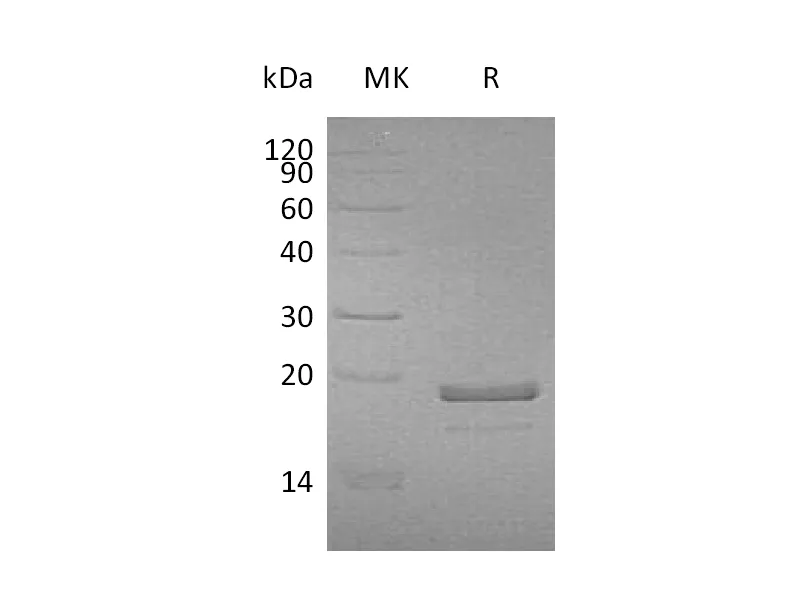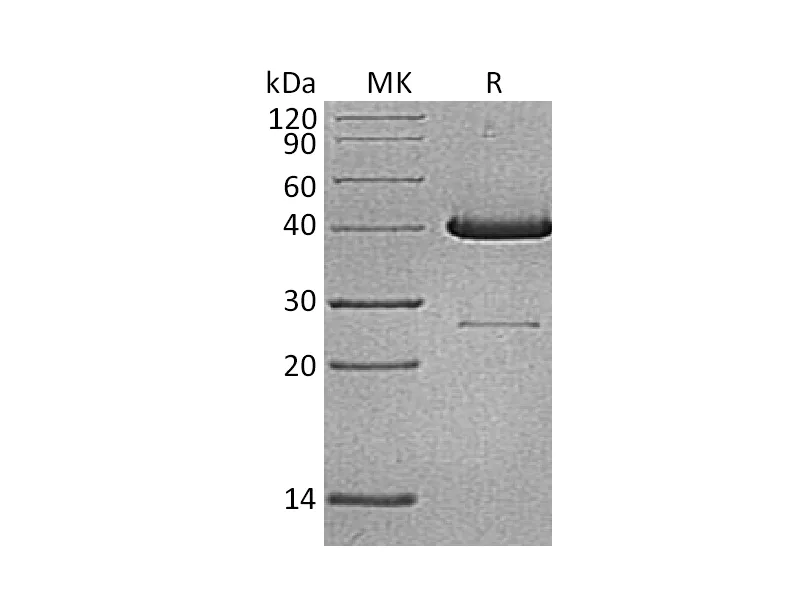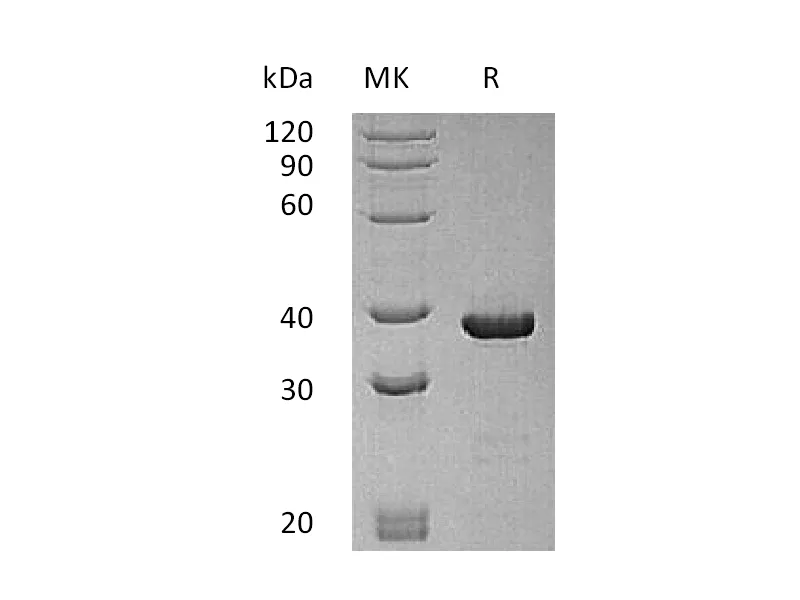| 产品名称 |
Recombinant Human uPAR (C-6His) |
| 英文名称 |
uPAR/CD87 |
| 纯度 |
Greater than 95% as determined by reducing SDS-PAGE |
| 内毒素 |
<1 EU/µg as determined by LAL test. |
| 蛋白构建 |
Recombinant Human Urokinase Plasminogen Activator Surface Receptor is produced by our Mammalian expression system and the target gene encoding Leu23-Arg303 is expressed with a 6His tag at the C-terminus. |
| Accession |
Q03405 |
| 表达宿主 |
Human Cells |
| 种属 |
Human |
| 预测分子量 |
32.4 KDa |
| 制剂 |
Lyophilized from a 0.2 μm filtered solution of 20mM Tris-HCl, 10% Trehalose, 2% Mannitol, 0.05% Tween 80, pH 8.0. |
| 运输方式 |
The product is shipped at ambient temperature.Upon receipt, store it immediately at the temperature listed below. |
| 稳定性&储存 |
Store at ≤-70°C, stable for 6 months after receipt.Store at ≤-70°C, stable for 3 months under sterile conditions after opening. Please minimize freeze-thaw cycles. |
| 复溶 |
Always centrifuge tubes before opening.Do not mix by vortex or pipetting.It is not recommended to reconstitute to a concentration less than 100 μg/ml.Dissolve the lyophilized protein in distilled water.Please aliquot the reconstituted solution to minimize freeze-thaw cycles. |
| 分子别名 |
| Urokinase Plasminogen Activator Surface Receptor; U-PAR; uPAR; Monocyte activation antigen Mo3; CD87; PLAUR; MO3; UPAR |
| 背景介绍 |
| The Urokinase Type Plasminogen Activator (uPA) receptor (uPAR) is a widely expressed receptor for urokinase plasminogen activator (uPA) and pro-uPA. uPAR / CD87 is a highly glycosylated, 55-60kDa integral membrane protein linked to the plasma membrane by a glycosylphosphatidylinositol (GPI) anchor. uPAR is expressed by T-cells, NK cells, monocytes, and neutrophils as well as non-hematopoietic cells that include vascular endothelial cells, fibroblasts, smooth muscle cells, keratinocytes, placental trophoblasts, hepatocytes, and a wide variety of tumor cells (including breast, colon, and prostate carcinoma, melanoma). It plays a critical role in the regulation of cell-surface plasminogen activation in physiological and pathological conditions, and it is also involved in cellular adhesion, the transmission of extracellular signals across the plasma membrane and the subsequent regulation of gene expression. uPAR has been implicated in several biological processes including angiogenesis, monocyte migration, cancer metastasis, trophoblast implantation, and wound healing. Human uPAR is encoded as a 313 amino acid residue polypeptide, excluding a 22 residue signal peptide and shows 60-70% similarity with the murine uPAR amino acid sequence although binding of uPA to uPAR shows strong species specificity. |
注意事项
本司产品仅用于科研,不用于临床诊断和治疗




